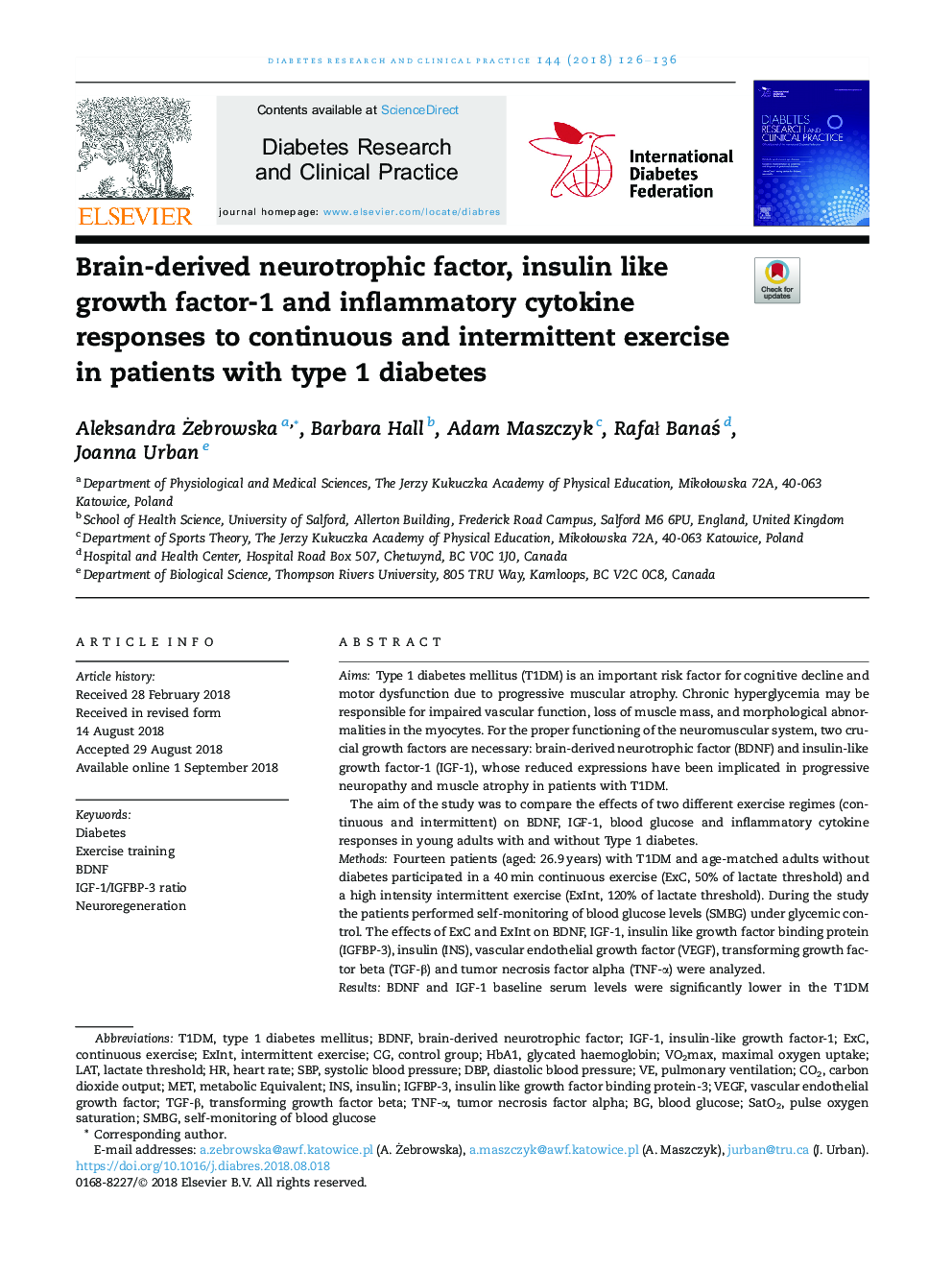| Article ID | Journal | Published Year | Pages | File Type |
|---|---|---|---|---|
| 10137880 | Diabetes Research and Clinical Practice | 2018 | 11 Pages |
Abstract
According to our results physical exercise has beneficial effects on serum BDNF and IGF-1 levels. A high-intensity intermittent exercise may be more effective at reducing the risk of exercise-induced glycaemic disorders in the T1DM patients as compared to continuous exercise.
Keywords
HbA1IGF-1NeuroregenerationT1DMDBPVO2maxSBPSMBGIGFBP-3EXCINSTGF-βBDNFLactate thresholdPulse oxygen saturationinsulininsulin-like growth factor-1DiabetesTransforming Growth Factor BetaIntermittent exerciseExercise trainingPulmonary ventilationtumor necrosis factor alphaMaximal oxygen uptakecarbon dioxide outputSelf-monitoring of blood glucosetype 1 diabetes mellitusLATHeart rateVascular endothelial growth factorVascular Endothelial Growth Factor (VEGF)Brain-derived neurotrophic factorTNF-αdiastolic blood pressuresystolic blood pressureMetabolic equivalentMETglycated haemoglobinCO2control groupBlood glucose
Related Topics
Life Sciences
Biochemistry, Genetics and Molecular Biology
Endocrinology
Authors
Aleksandra Å»ebrowska, Barbara Hall, Adam Maszczyk, RafaÅ BanaÅ, Joanna Urban,
